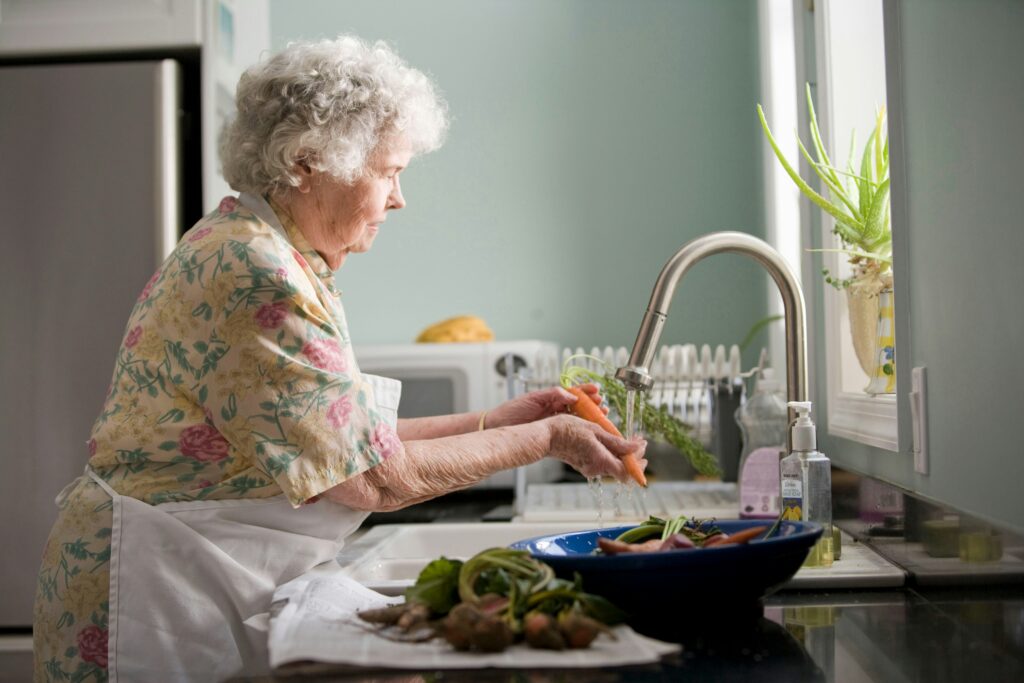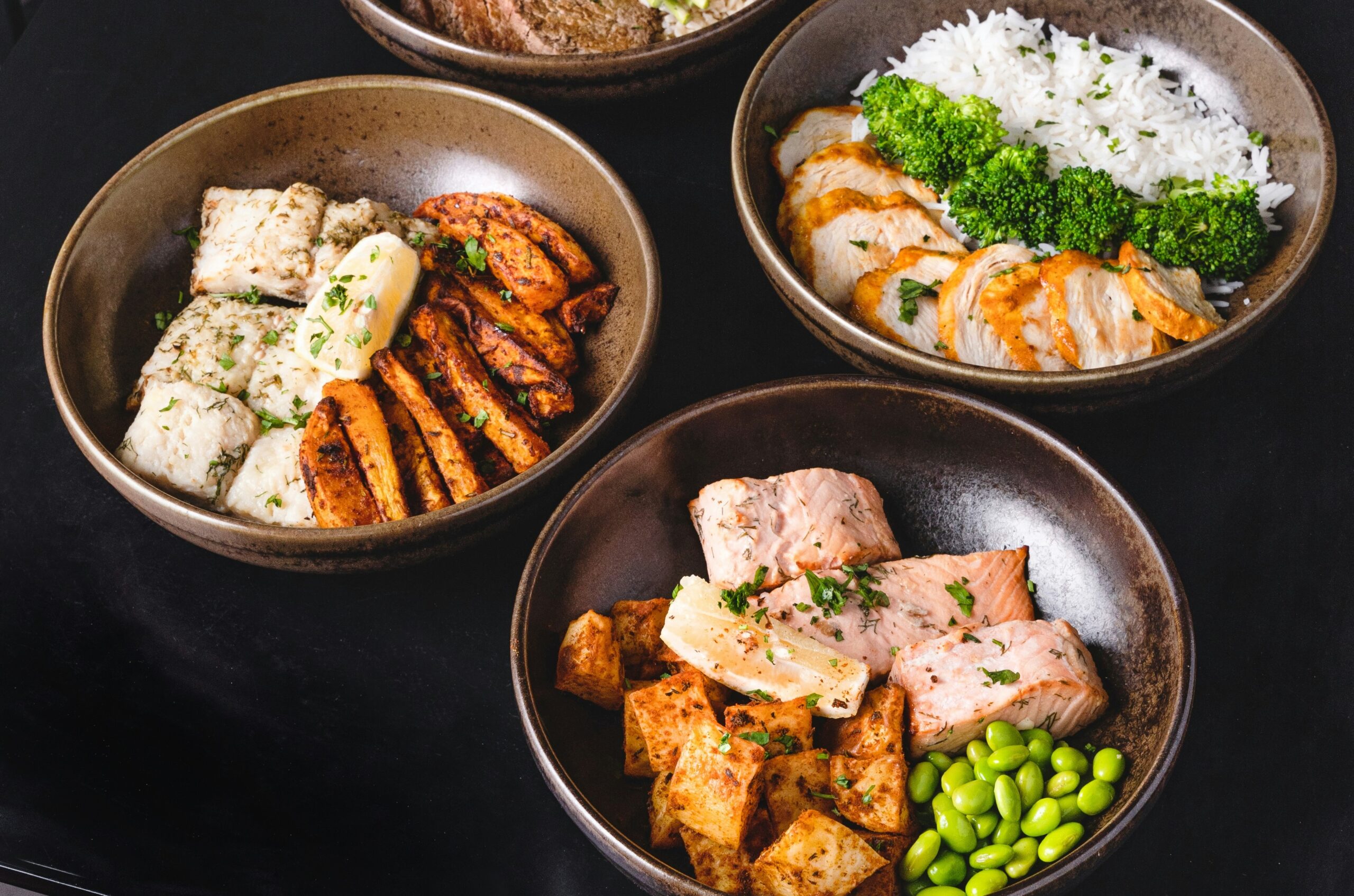Editor’s Note: Looking for information specifically tailored to women? Check out our new post, “Protein Requirements for Elderly Women”, where we dive deeper into topics like bone density, menopause, and more. Otherwise, read on for a broader look at why older adults in general might benefit from higher protein intake.
Do older people need more protein?

When you think about staying healthy as you age, protein may not be the first thing on your mind—but it deserves a top spot on your nutrition checklist. Traditional guidelines have long advised adults to aim for about 0.8 grams of protein per kilogram of body weight each day. For a 70 kg (154 lb) person, that’s around 56 grams. However, recent research suggests this “standard” might be too low for seniors. Experts now recommend about 1.0–1.2 g/kg for healthy older adults, and even more (up to 1.5 g/kg) for those who are frail, ill, or recovering from surgery. [1]
Why More Protein?
Aging muscles just aren’t as responsive to small protein doses as younger muscles. This phenomenon, called “anabolic resistance,” means older adults need a bigger protein boost to spark the same muscle-building effect. [3] Sticking to only 0.8 g/kg (the current Recommended Dietary Allowance) might technically prevent deficiency, but it’s often not enough to preserve muscle mass, which is critical for mobility and overall health. [1] Researchers have shown that seniors who consume higher protein tend to maintain better muscle strength, walk faster, and recover more quickly from injuries than those who eat less protein. [4]
Practical Protein Targets
For most older adults, 1.0–1.2 g/kg per day is a realistic goal that supports muscle maintenance without overburdening the kidneys (assuming normal kidney function). That means if you weigh 70 kg, aim for 70–84 grams of protein. Some physicians and dietitians even bump it up to 1.5 g/kg for folks dealing with illness, surgeries, or significant muscle loss. If you’re unsure about what’s right for you, it’s always wise to check in with a healthcare provider—especially if you have kidney concerns.
Protein as a Percentage of Calories
Another way to look at protein is by percentage of total calories. Generally, protein can make up 10–35% of daily calories. For an older adult who eats fewer total calories, aiming for around 20–30% of calories from protein can help reach that sweet spot of ~1.0–1.2 g/kg. If you only consume 1,500 kcal a day, for example, 20% protein translates to 75 g of protein—which could be right on target. [1]
High-Quality Protein Sources

Photo by Eiliv Aceron on Unsplash
To get the most bang for your protein buck, choose high-quality sources. Animal-based proteins (lean meats, poultry, fish, eggs, dairy) are typically “complete,” offering all the essential amino acids (especially leucine) needed to stimulate muscle protein synthesis. Plant-based proteins (beans, lentils, nuts, seeds, whole grains) can also do the trick, though they’re often lower in certain amino acids and may require slightly larger portions or careful pairing (e.g., beans + rice) to get a full spectrum of essential amino acids. Soy (tofu, tempeh, edamame) is one plant option that’s comparable in quality to animal protein. [6]
For older adults with reduced appetite or dental issues, consider softer or easier-to-chew foods. Eggs, dairy products (like Greek yogurt), and tender fish (like salmon) are nutrient-dense and gentle on digestion. Liquid options such as milk, smoothies, and protein shakes can be a lifesaver if eating large meals is a challenge. [1]
Spreading It Out
Instead of loading all your protein at dinner, aim to spread it across three meals (or more) throughout the day. Research shows that distributing protein evenly helps maximize muscle protein synthesis, giving your body multiple opportunities to rebuild and repair. [3] So, try adding a high-protein boost at breakfast—like eggs or yogurt—rather than waiting until the evening meal.
Don’t Forget to Exercise

Photo by Freepik
Eating enough protein is only half the equation—regular physical activity, especially resistance training (think: light weightlifting or bodyweight exercises), helps signal your muscles to use that extra protein more effectively. [7] Even short sessions of resistance exercises can make a difference. Pairing strength workouts with adequate protein intake is a powerful combination for preventing or delaying age-related muscle loss (sarcopenia).
How FoodEye Can Help
Tracking protein can feel like a chore, especially if you’re not one to weigh or measure every bite. That’s where FoodEye comes in. We’re developing this easy-to-use app that lets you record your meals directly from photos or quick meal descriptions—no tedious typing or math skills required. Want to see if you’re hitting your daily protein goals? Snap a pic of your lunch, add a few details, and let FoodEye do the rest. It’s a simple way to stay on track.
The Bottom Line
Protein requirements don’t magically stay the same as we get older—our bodies change, and so do our nutritional needs. Aim for around 1.0–1.2 g/kg of protein per day to maintain muscle and strength, increase it if you’re recovering from illness or injury, and remember that exercise amplifies those benefits. By giving your muscles the fuel they need and staying active, you’ll stand a better chance of staying strong and independent well into your golden years.
Note: This post is for informational purposes only and does not constitute medical advice. If you have specific dietary or health concerns, please consult a qualified professional.

Comments
One response to “Protein Requirements for Older Adults: Why More Might Be Better”
[…] for more general info? We’ve covered broader guidelines for seniors in our earlier post, “Protein Requirements for Older Adults: Why More Might Be Better.” If you want a deeper dive into why older adults in general often need extra protein, feel free to […]